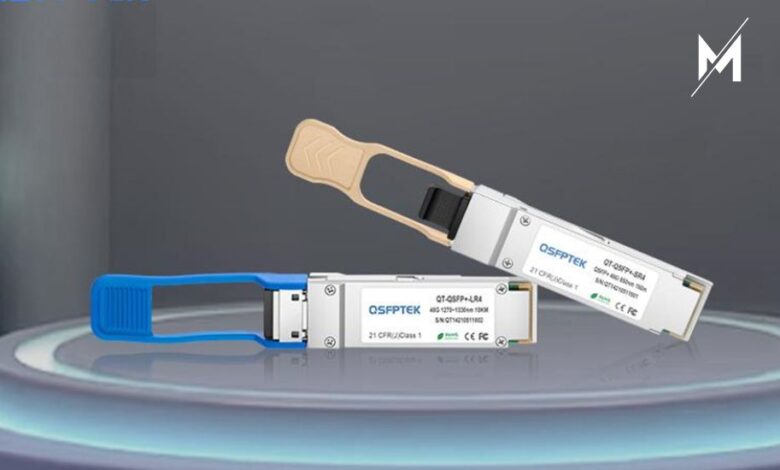Enhancing Parallel Processing in HPC Systems Using 40G Transceivers

High-performance computing (HPC) systems are designed to tackle the most computationally intensive tasks, from complex simulations and scientific research to data analysis and machine learning. At the heart of HPC’s effectiveness is its ability to perform parallel processing—simultaneously executing multiple processes across numerous computing nodes. However, one of the critical challenges in parallel processing is ensuring efficient and rapid communication between these nodes. This is where 40G transceivers come into play, offering a significant boost in performance and reducing computational bottlenecks.
The Role of 40G Transceivers in HPC
Improved Data Transfer Rates
The primary advantage of 40G transceivers is their high data transfer rate. In HPC environments, vast amounts of data must be exchanged between nodes to coordinate tasks and share results. Traditional network speeds, such as 10G, often become bottlenecks, slowing down the entire computation process. By upgrading to 40G transceivers, data transfer rates are quadrupled, significantly reducing the time required for data exchanges. This enhancement allows HPC systems to maintain high throughput and efficiency, crucial for applications that demand real-time or near-real-time processing.
Reduced Latency
Latency, the delay before data transfer begins following an instruction, is a critical factor in parallel processing. High latency can severely hinder the performance of HPC systems, as it introduces delays in communication between nodes. 40G transceivers offer lower latency compared to their predecessors, ensuring that data packets are transferred more quickly. This reduction in latency enhances synchronization between processing nodes, allowing for more efficient parallel computations and minimizing idle times.
Enhanced Scalability
As HPC demands grow, so does the need for scalable network solutions. 40G transceivers provide a scalable infrastructure that can accommodate the increasing number of nodes in HPC clusters. This scalability is essential for expanding computational capacity without encountering significant performance degradation. With 40G modules, it is easier to add more nodes and interconnect them efficiently, supporting the ever-growing computational needs of modern HPC applications.
Practical Applications and Benefits
Scientific Simulations
In scientific research, simulations often involve complex computations that require extensive parallel processing. Fields such as climate modeling, astrophysics, and materials science rely on HPC to run simulations that would be impractical on standard computing systems. 40G transceivers facilitate faster data exchanges between nodes, enabling more detailed and accurate simulations. This speedup allows scientists to conduct more iterations and explore larger parameter spaces within the same timeframe.
Big Data Analytics
Big Data analytics involves processing and analyzing massive datasets to extract meaningful insights. HPC systems equipped with 40G transceivers can handle these tasks more efficiently by distributing the data processing workload across multiple nodes. The high-speed data transfers and reduced latency provided by 40G transceivers ensure that analytical tasks are completed faster, supporting real-time data analysis and decision-making.
Machine Learning and AI
Machine learning (ML) and artificial intelligence (AI) workloads are becoming increasingly common in HPC environments. Training ML models, especially deep learning models, requires significant computational power and parallel processing. 40G transceivers enable faster communication between computing nodes, which is critical for synchronizing model parameters and sharing intermediate results. This acceleration reduces the overall training time, allowing researchers to iterate more quickly and deploy models faster.
Implementation Considerations
While the benefits of 40G transceivers in HPC systems are clear, implementing these networks requires careful planning. Here are a few considerations:
Compatibility: Ensure that all HPC hardware, including switches, network interface cards (NICs), and cabling, is compatible with 40G standards.
Cost: While 40G transceivers offer significant performance improvements, they also come with higher initial costs. Organizations need to balance the benefits against the budget.
Expertise: Deploying and managing 40G transceivers requires specialized knowledge. Training for network administrators and HPC operators is essential to maximize the potential of the upgraded infrastructure.
Conclusion
40G transceivers represent a significant advancement for HPC systems, offering enhanced data transfer rates, reduced latency, and improved scalability. By integrating 40G modules, HPC systems can optimize parallel processing, reducing computational bottlenecks and enabling faster, more efficient computations. Whether in scientific simulations, Big Data analytics, or AI, the adoption of 40G transceivers ensures that HPC systems can meet the growing demands of modern computational tasks, paving the way for new discoveries and innovations.

